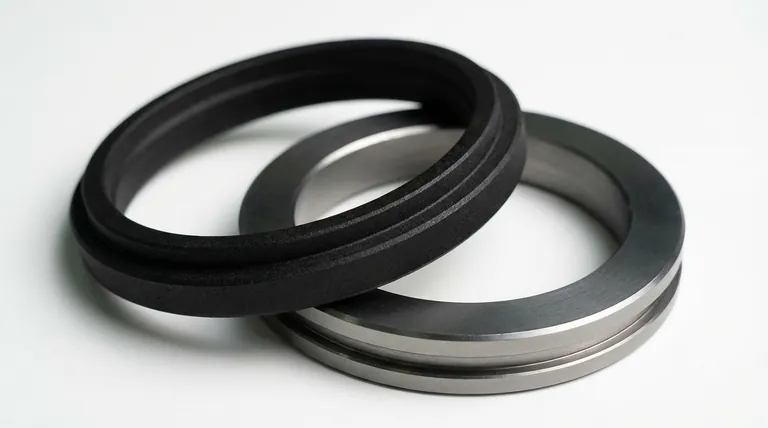The lifespan of a PVD coating on a watch is not a single number, but a variable based on quality and use. While a high-quality PVD finish can easily last a decade or more under normal conditions, its true durability is measured in resistance to wear, not just the passage of time. It is a highly durable finish, but it is not permanent and will show wear differently than bare metal.
The central takeaway is that PVD is a surface coating, not the material itself. While far more durable than older plating methods, its longevity on a watch is ultimately determined by your lifestyle and how frequently the watch makes contact with abrasive surfaces.

What Determines PVD Coating Lifespan?
The wide variance in PVD longevity—from a few years to several decades—comes down to a few critical factors. Understanding them is key to managing your expectations for a black or colored watch.
The Quality of the PVD Application
Not all PVD (Physical Vapor Deposition) coatings are created equal. A superior application involves meticulously cleaning the base metal (substrate) and applying the coating in a high-vacuum environment to ensure a flawless bond.
The specific material used for the coating, such as Titanium Nitride (TiN) or the more premium Diamond-Like Carbon (DLC), also dramatically impacts hardness and longevity.
The Base Material of the Watch
The coating is only as stable as the material it's bonded to. PVD adheres exceptionally well to high-grade materials like 316L stainless steel or titanium.
If applied to a lower-quality base metal, the coating may be more susceptible to flaking or scratching if the underlying material is soft and easily dented.
The Thickness of the Coating
A thicker PVD coating provides a greater buffer against scratches and abrasion. While microns thick, this variation matters.
Manufacturers of higher-end watches often invest in thicker, more robust coatings, which directly translates to a longer-lasting finish.
Your Personal Wear and Tear Habits
This is the most significant factor for any watch owner. A PVD watch worn carefully to an office will look new for years.
The same watch worn daily for manual labor or by someone who is hard on their watches will show wear much faster. High-contact points like the clasp, the edges of the lugs, and the bezel will always be the first areas to show signs of abrasion.
Understanding the Trade-offs of PVD Finishes
PVD offers a compelling aesthetic, but it comes with unique considerations compared to a traditional stainless steel watch. Being aware of these trade-offs is crucial for any potential buyer.
Durability vs. Repairability
PVD coatings are extremely hard and scratch-resistant—often more so than the steel underneath. However, they are not scratch-proof.
When a deep scratch does occur, it reveals the bright silver-colored steel beneath. Unlike a bare steel watch, you cannot polish or brush this scratch out. Repairing it requires the entire watch case to be professionally stripped and re-coated, which is rarely cost-effective.
Wear Happens on the Edges
Over time, wear on a PVD watch is not uniform. It will manifest as rubbing or "brassing" on the sharpest corners and edges of the watch case.
This gradual wearing away of the coating on high-contact points creates a specific patina that some collectors appreciate, but many others find undesirable.
Not All Black Coatings Are the Same
The term "PVD" is a broad category for the application process. DLC (Diamond-Like Carbon) is a specific type of PVD coating that is generally regarded as superior.
DLC is harder, more scratch-resistant, and often provides a deeper, richer black finish than standard Titanium-based PVD coatings. If maximum durability is your goal, a DLC coating is a meaningful upgrade.
Making the Right Choice for Your Watch
Ultimately, the decision to buy a PVD watch depends on aligning its characteristics with your goals and lifestyle.
- If your primary focus is a rugged, daily-wear "beater" watch: A traditional stainless steel finish is more practical, as its inevitable scratches can be refinished or simply accepted as character.
- If your primary focus is aesthetics for an occasional-wear watch: A PVD-coated watch is an excellent choice, as its finish will remain pristine for a very long time with careful use.
- If your primary focus is the most durable black finish available: Seek out watches specifically advertised with DLC (Diamond-Like Carbon) coatings for their superior hardness and scratch resistance.
Choosing the right finish is about understanding how a watch will age with you and your activities.
Summary Table:
| Factor | Impact on PVD Coating Lifespan |
|---|---|
| Coating Quality | High-vacuum application and premium materials (e.g., DLC) significantly increase longevity. |
| Base Material | Adheres best to high-grade metals like 316L stainless steel; lower quality bases can lead to flaking. |
| Coating Thickness | A thicker coating provides a greater buffer against scratches and abrasion. |
| Wear Habits | Daily manual labor accelerates wear; careful office use preserves the finish for years. |
Ready to achieve a flawless, durable finish for your components? At KINTEK, we specialize in advanced PVD coating solutions for laboratory and industrial applications. Our expertise ensures a superior bond and lasting performance for your equipment. Contact our experts today to discuss how our coatings can enhance your product's durability and aesthetics.
Visual Guide

Related Products
- Custom CVD Diamond Coating for Lab Applications
- High-Purity Titanium Foil and Sheet for Industrial Applications
- Silicon Carbide SiC Thermal Heating Elements for Electric Furnace
- Hexagonal Boron Nitride HBN Thermocouple Protection Tube
- Electrolytic Electrochemical Cell for Coating Evaluation
People Also Ask
- What is the process of CVD diamond coating? Grow a Superior, Chemically-Bonded Diamond Layer
- How thick is CVD diamond coating? Balancing Durability and Stress for Optimal Performance
- How are tools coated with diamond? Achieve Superior Hardness and Low Friction for Your Tools
- What is diamond coating film? A Thin Layer of Diamond for Extreme Performance
- How long does diamond coating last? Maximize Lifespan with the Right Coating for Your Application



















